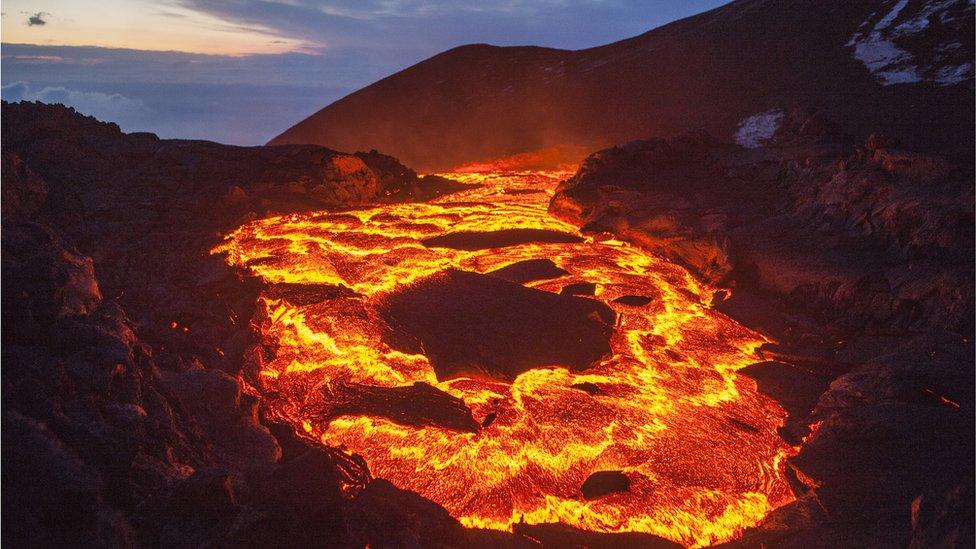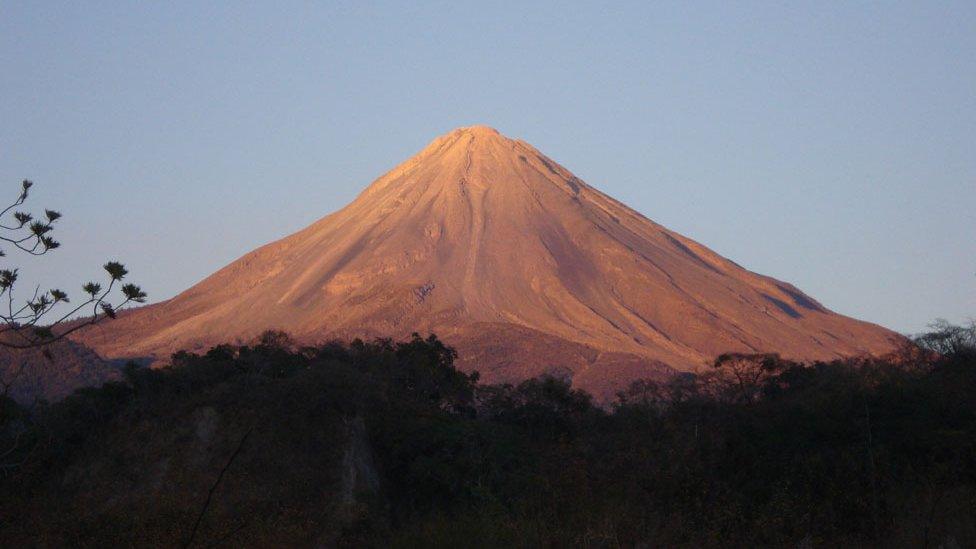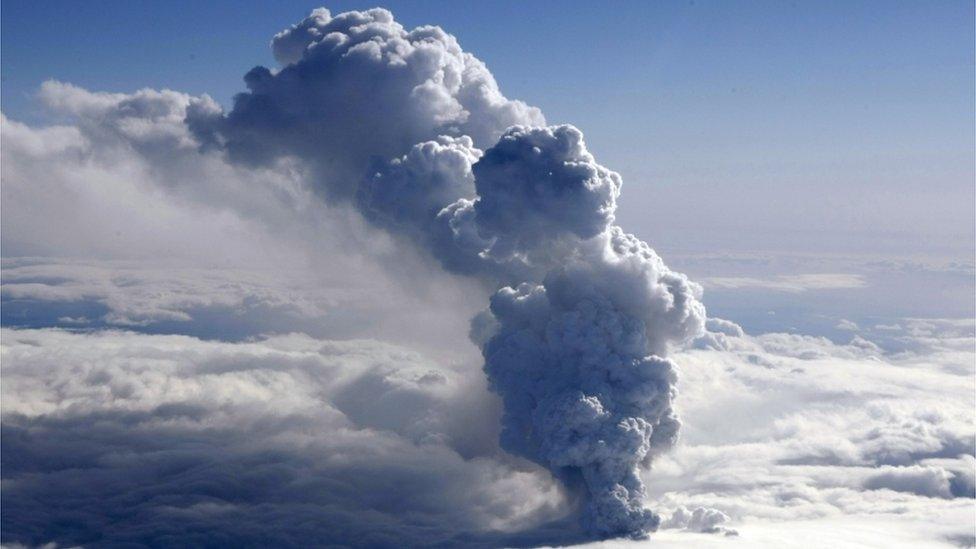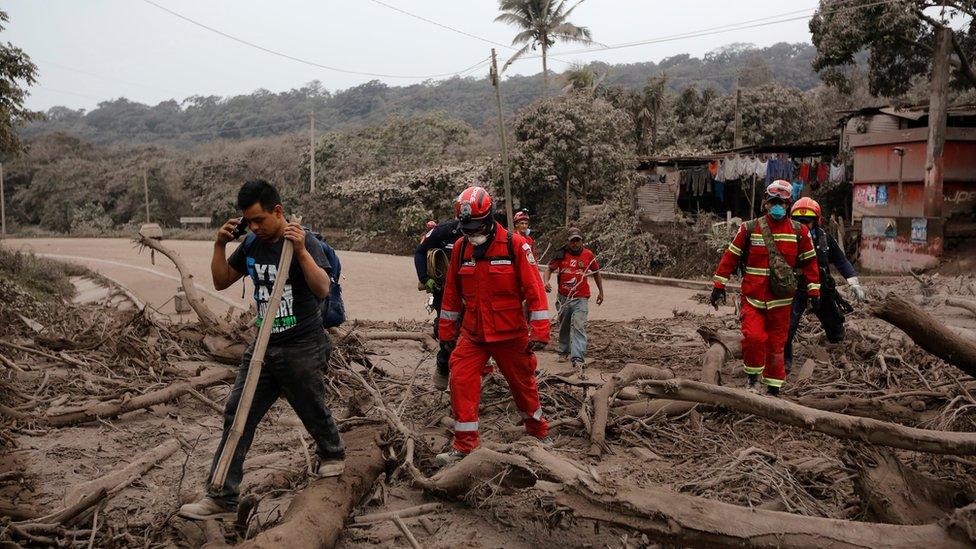Geology study finds massive volcanic blast
- Published

Dr Julia Crummy believes we still have much to learn about eruptions
Research at the British Geological Survey (BGS) in Edinburgh is warning that we still don't know enough when it comes to predicting and preparing for major volcanic eruptions.
Dr Julia Crummy has based her conclusion on years spent researching the Volcán de Colima in Mexico.
Standing over 12,470ft (3,800m) high, it is one of the most active volcanoes in North America.
Colima has erupted every other year, on average, since 1900. Its last phase of eruptions lasted from 2013 to 2017.
In 2015 the fall of ash was so severe that hundreds of people were evacuated from their homes and the local airport was closed temporarily. There were more evacuations the following year.

One Colima eruption was mistaken for the sound of cavalry
Dr Crummy says the last really big explosion was in 1913.
"There was a civil war going on at the time and they actually thought it was cavalry," she says. "It produced a really huge ash cloud that rose up to about 23km (14 miles).
"Pyroclastic flows travelled 15km (9 miles) from the volcano and ash fall was reported in Guadalajara. That's about 160km (99 miles) away."
Today, more than 500,000 people live within 30km (17 miles) of Colima. Extensive plans are in place to safeguard them in the event of another big explosion.
But how big will that be?
Prehistoric eruptions
The historical record of Colima's activity only begins after the Spanish conquistadors arrived in 1519.
Dr Crummy has been using geology to look back further by examining layers of ash left behind by prehistoric eruptions.
"Charcoal samples for dating have enabled us to identify that these span the past 30,000 years.
"By looking at the minerals in the samples we can look at how behaviour has changed over time."

Eyjafjallajökull in Iceland reminded the world of the potential disruption from volcanoes
By establishing the thickness of each layer Dr Crummy was able to build a numerical model of how large the eruptions had been.
She modelled the volume and magnitude of five prehistoric explosive events between 4,400 and 6,000 years ago.
Her most surprising finding is that some were an order of magnitude bigger than previously thought.
Instead of throwing a cubic kilometre of debris into the atmosphere it was 10 times as much.
That is 10 times larger than the explosions on which the current plans and hazard maps are based.
"That's not to say the hazard maps are wrong," Dr Crummy says.
"They're based on a worst case scenario using known historical data, which is absolutely fine.
"But what we're doing is highlighting the fact that actually, if you look at the geological record and extend beyond the historical over the last 10,000 years or so, we can see there have been much larger eruptions.
"So it's about awareness."

An eruption of the Fuego volcano in Guatemala last year is thought to have killed 190 people
This study of single volcano has far wider implications.
An estimated 800 million people live within 100km (62 miles) of a potentially active volcano.
Writing in the Journal of Applied Volcanology, external, Dr Crummy says it means science's understanding of past volcanic eruptions is still limited.
And in many places the geological record is less well preserved than at Colima.
The eruption of Eyjafjallajökull in Iceland disrupted air traffic as recently as 2010 but much of the geological evidence has already been washed away.
Dr Crummy's research was funded by the Natural Environment Research Council, the BGS and the Smithsonian Institute.
Colima's cone is closely monitored - you can do it yourself on a live webcam, external.
This week increasing seismic activity raised the alert state from green to yellow.
That means people are not being allowed within 8km (5 miles) of the volcano.
So, for the time being, tourists are prevented from taking snaps of Colima's vivid contrast between snow and fire.